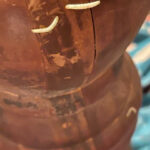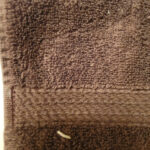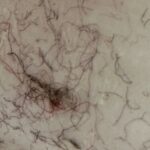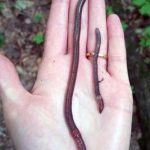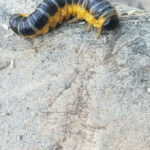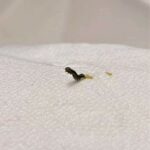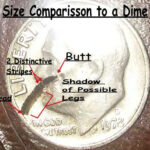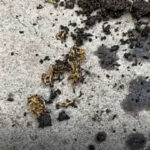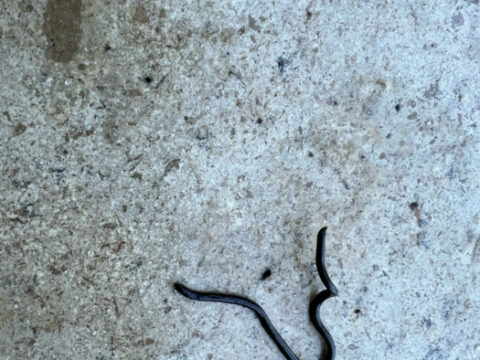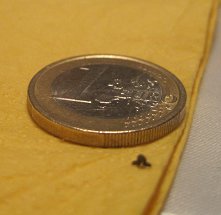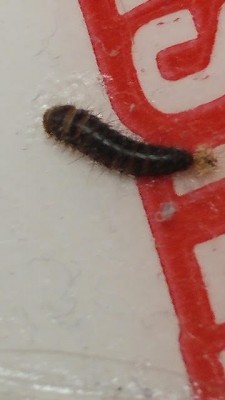
“Any idea what this worm is?” asks Luke in his submission regarding the tiny, yellow, worm-like creature pictured below. “It looks very similar to a meal moth larva but more yellow, with a larger spot on its back, and a light colored head. I found it dangling from a really thin silk line off a tree.” Now, if it were not for that last piece of context, we would have identified this as a mealworm (which is not to be confused with the Indianmeal moth larva that Luke mentions). Mealworms are larvae of darkling beetles, but as such, they cannot produce silk/web like many species of caterpillars can. This is why context is so important. Without that piece of information, we would have provided a false identification (which is not to say that we have not provided incorrect identifications in the past, even with ample context: we’re only human after all!).
So, this begs the question, what did Luke find? We agree that this critter fits some of the characteristics of an Indianmeal moth caterpillar: it has the minuscule, segmented body, bulbous head, and legs underneath its body. However, as Luke already points out, this creature is yellow, while Indianmeal moth caterpillars are cream. Another caterpillar that comes to mind is the clothes moth caterpillar. These caterpillars also tend to be cream in color, though they can also be yellow, depending on the lighting in which they are photographed. These guys are not harmful to humans and pets, but we definitely advise Luke not to bring them into his home.
The reason for this is because clothes moth caterpillars, as their name suggests, like clothes. What we mean by this is that they will chew holes through your clothes. Those moth-eaten sweaters you find at the back of your closet are not technically eaten by moths, but by their caterpillars. But they don’t stop at clothes: they will munch on any textile that has animal fibers in it like cotton and wool. Typically, when our readers find these, it is in their homes, so we think it’s interesting that Luke found this one hanging from a tree. It’s not implausible though: after all, clothes moth larvae had to eat something else before humans came around and started making textiles. In the wild, the moths will lay their eggs in fruit trees, and the larvae will eat the leaves of the tree, as well as any animal fibers if they can find some (like feathers or fur). Clothes moth caterpillars are able to spin webs, so this is the “silk line” that Luke saw the caterpillar hanging from.
In conclusion, we think Luke might have found a clothes moth caterpillar. The only thing that has us doubting this is the strip of orange across its back, which we have not seen on any clothes moth caterpillars. That said, it could simply be some discoloration, or maybe the caterpillar is getting ready to pupate and is between stages of maturation. In any case, we just want to point out that this identification is not 100% certain, but that we do not think Luke has anything to worry about so far as his health and safety. The physical characteristics of the creature all point to it being a caterpillar of some kind. We hope this helps, and we wish Luke the very best!
All About Worms is always free, always reader-supported. Your tips via CashApp, Venmo, or Paypal are appreciated! Receipts will come from ISIPP Publishing.
You might also find these guys interesting!





